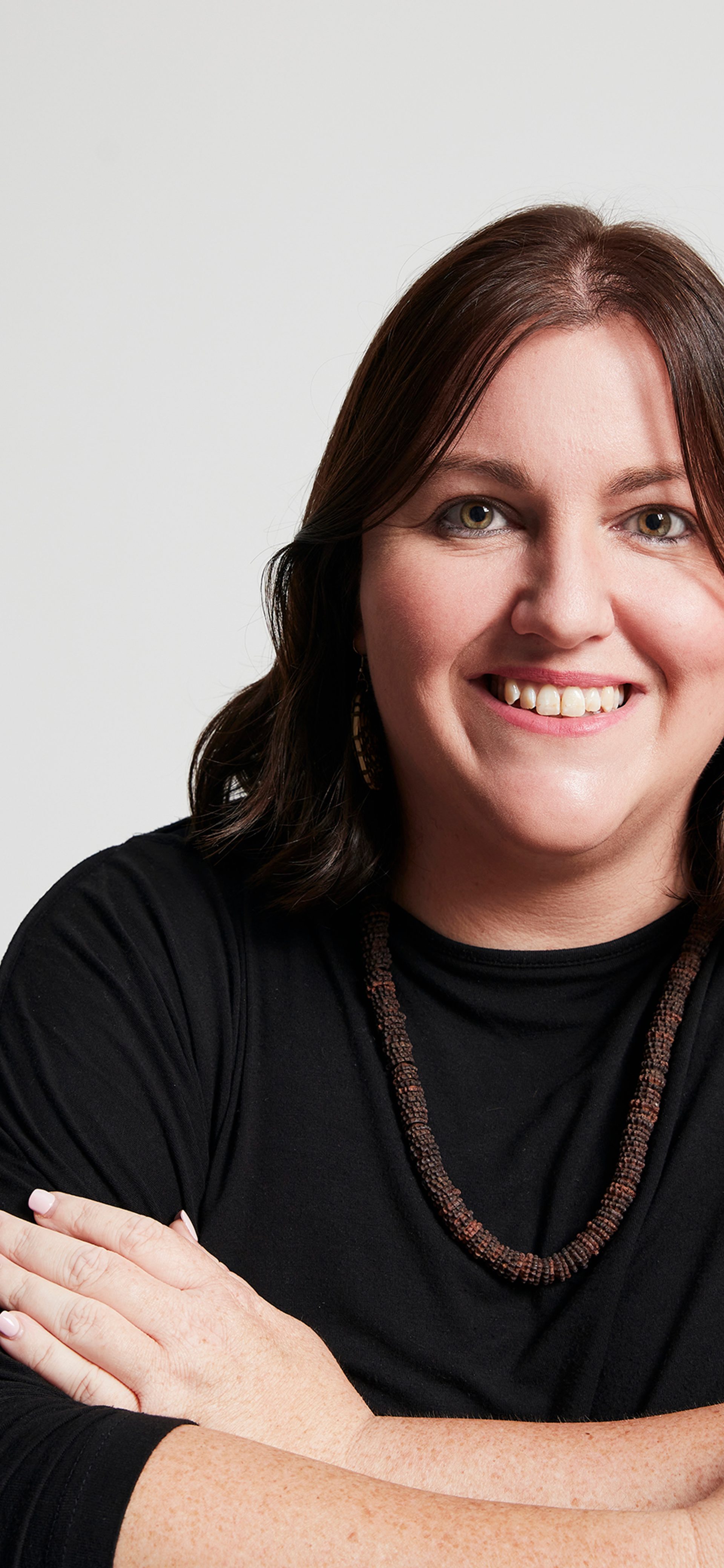Jayne Christian

Baramadagal weaver and social justice lawyer Jayne Christian reflects on her 2023 galang residency in Paris, a Powerhouse initiative in partnership with Cité internationale des arts.
Ayeesha Ash Can you please introduce yourself?
Jayne Christian I'm Jayne Christian. I'm a Baramadagal woman of the Dharug Nation.
AA What type of work do you create?
JC I practice weaving, using bush dyed or synthetic dyed or natural raffia, but also native grasses.
AA And how did you learn to do that?
JC I grew up in Wagga Wagga and I was taught by my mum and the aunts in the Wiradjuri community how to weave, probably just over ten years ago.
AA What motivated you to apply for a galang residency?
JC I just said, oh, that looks interesting. I wonder who'd apply for that? And kept scrolling. And then I received an email from a non-Aboriginal person who had also seen it and said that they thought of a few of their favourite Aboriginal artists and thought I should apply. That kind of hit my head a bit because I thought, oh, people think of me as an artist.
AA So you don't identify as an artist or do you now?
JC It's been a process and I have relapses. I think I've become comfortable with being an artisan, but I learnt when I was over in Paris the imposter syndrome and just the journey of being an artist. Everyone seems to go through this, so maybe I am an artist.
AA It sounds like you're in a very artist mindset. Can you share some of the project aims that you put in your proposal?
JC It really felt like just a blank canvas to think of something new and fresh to do. And I proposed going over to Paris to learn more about the French society, the French Revolution and to spend time thinking about what commonalities that society has had with First Nations experience of resistance and revolution.
I had a very basic understanding of French history. And once you're there, you realise how much you don't know about their current political situation and how society is there. So for me, it was just about really immersing myself in the experience of being there through the filter of being a Dharug person and then creating a story to tell what I saw in that place through who I am.
‘I proposed going over to Paris to learn more about the French society, the French Revolution and to spend time thinking about what commonalities that society has had with First Nations experience of resistance and revolution. ’
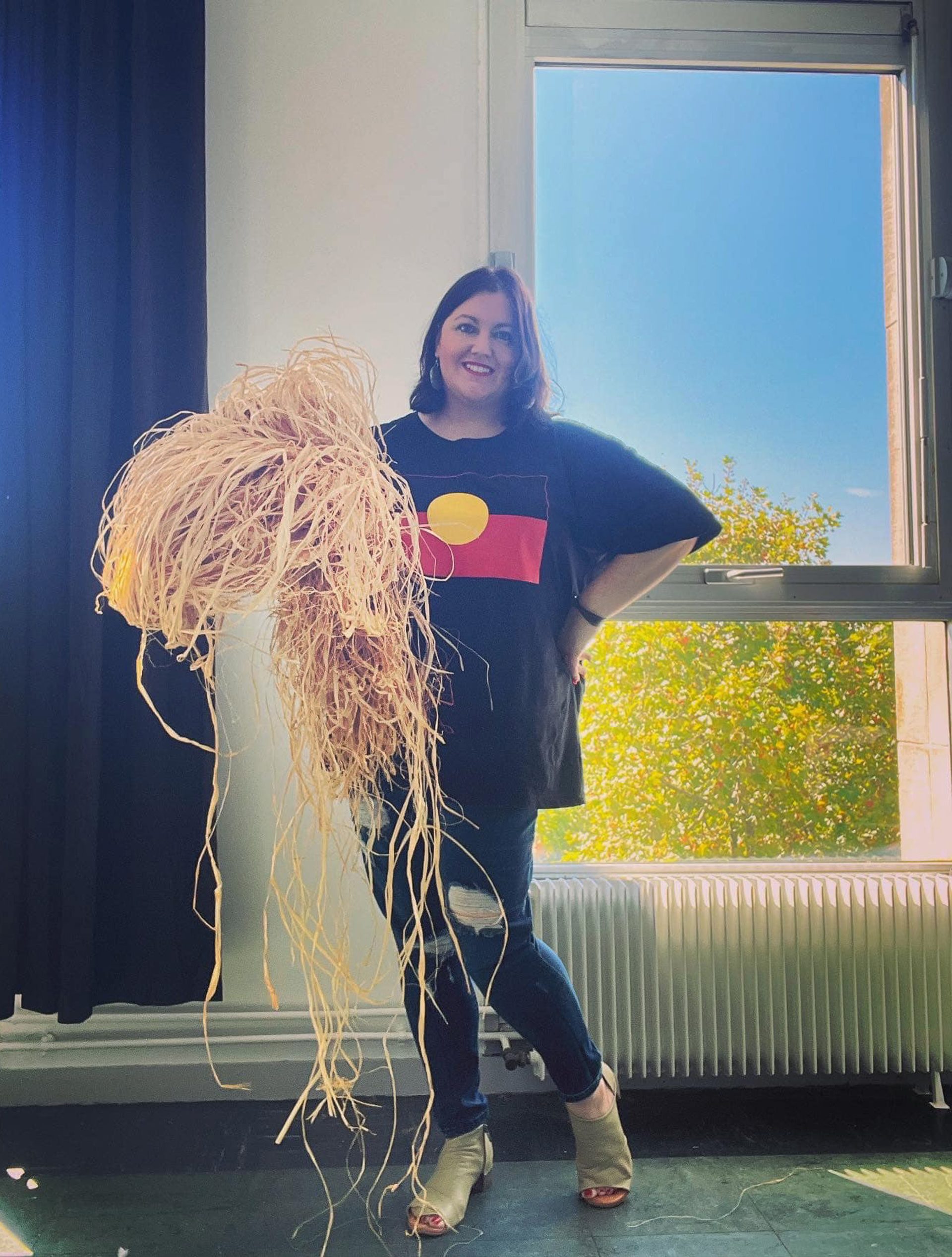
AA I'm not sure what interaction you had with the French society as a whole, but sharing your heritage and your identity as a First Nations person – was that easy to communicate? Did they understand?
JC That was a new experience for me as well. I think because we're so conditioned to the white Australian response to who we are, that there's all this anxiety that comes with anticipating how people are programmed and what their response to you is going to be. But when you're in a different hemisphere, none of that exists.
I was really grateful to the arts because there was a Songlines exhibition and different things that people would tell me about that they had seen come to Paris, which gave them an understanding. I also found that the people I seem to connect with and came to learn what I was there to share had a bit of a social justice interest to them.
And so the whole idea of settler colonialism and how that's played in Australia, they had a much clearer understanding than I think most Australians do. I think probably being a fair skinned Aboriginal person, there was quite a few people that that was their first question. But as soon as you answer the question, there was no hang ups.
AA Wow that's really interesting. What has been the standout knowledge that you've gained along the way related to your practice?
JC I do bush dyeing with my mum back here and I did go to a French class on eco and vegetable dyeing. I was glad that I got to do that. With the weaving, I held the workshops, sharing with the other residents and members of the public there in Paris, what it is we do and why we do it. That was really good – but I noticed there was an older lady who was really sweet and she was losing her eyesight, and she'd been doing French tapestries. but with losing her eyesight, she couldn't continue to finish the pieces because it was quite intricate. But she found with the weaving that I was showing her, she could do that bigger and bulky, and she enjoyed doing it. She said, ‘Oh, I might have to start doing this now’. Then she came back to the city on a different day and brought me her tapestries to show me the way the French do their artisan work. So there was just a lot of organic knowledge sharing and connection that came just from being there.
AA That's really nice to connect with people in that way. What were some of the challenges you faced, if any? how did you respond to them?
JC I'm learning French at the moment. But I didn't learn any French before I went. It's just such a surreal experience. I think to be in a place for as long as you are on the residency and to have a daily routine and everything in this place where nothing makes sense to you immediately – that can be challenging. But it can also just be really curious and interesting and a chance to unpack the way you interpret things. I think probably what I found very challenging was the heatwaves over there.
AA I didn’t even know they had heatwaves.
JC They do have heatwaves. And I felt like such a sook because on a 30 degree day I would think that's lovely here. But over there it's just terrible: the buildings being as historic as they are, don't have modern air conditioning and things like that. In Australia we're quite lucky in a way that we have extreme weathers but we have ways around it. And over there, the heatwaves really wore me out.
The layers of storytelling that I'm using – historical French records about our people to tell our story the way we want it understood – they're the kind of overlaps and overlays I couldn't have planned.
AA Can you talk us through what you created during the galang residency?
JC The residency was such a good opportunity to just go and learn and immerse myself and see new things and consider, you know, these perspectives and how they tie in to what I align with back home.
I did start weaving for an exhibition, which is going to open in April at Blacktown Arts. So I started some pieces while I was there, which helped to communicate with people what I do rather than just talking about it – it was a good exercise for me, really, because I wasn't in my normal place. I was right on the River Seine but unlike the rivers back home, you can't just walk down and pick some lomandra [mat rushes]. It's all concrete.
There were things that I kind of thought, ‘Oh, yeah, I'll be near a river. That'll be fine. I'll find something.’ Whereas when you're there, you can't even walk on the grass. Everything's cordoned off. It's all very concrete. That kind of pushed me to be creative. I discovered some French fashion materials that I incorporated using with my raffia. It pushed my own practice to have to be practical and pragmatic for where I was. I really got down the narrative, the thinking of what I wanted, the story that I was experiencing and the story that I wanted to tell when I come back, and then starting work on that, and then knowing when I come back what I had to do to finish bringing it all together.

AA What have you enjoyed most in the research process?
JC We often talk about being guided by our old ones, and there's just been some really nice surprises planted in this whole experience for me. I work with other artists back home and Jonathan Jones is someone who I've known for a very long time, just through the community. And he had told me about the places in France that he'd gone to and places I might like to go to see certain collections.
It was really good for me. I was able to connect with items, woven items, other cultural items, sketches of people from the tribal groups of Sydney and the area of Parramatta itself at different stages. That was all really good to come across.
I've been able to obtain a colour engraving of a sketch that I first saw when I was in France. And then I've come back and was thinking about whether I could get permission to reproduce that in my exhibition, because it just really spoke to me. And then it turned out there's one colour engraving from 1824 and I now have it because I could buy it, because it's a rare picture.
The layers of storytelling that I'm using – historical French records about our people to tell our story the way we want it understood – they're the kind of overlaps and overlays I couldn't have planned. I couldn't have planned that that sketch would really speak to me. And then it happens to be one colour engraving from that time that was available for me to purchase. I guess that's part of that research of just going and seeing and following the trails and learning that I really enjoyed and couldn't completely plan from the outset. You just get taken along the current of it.
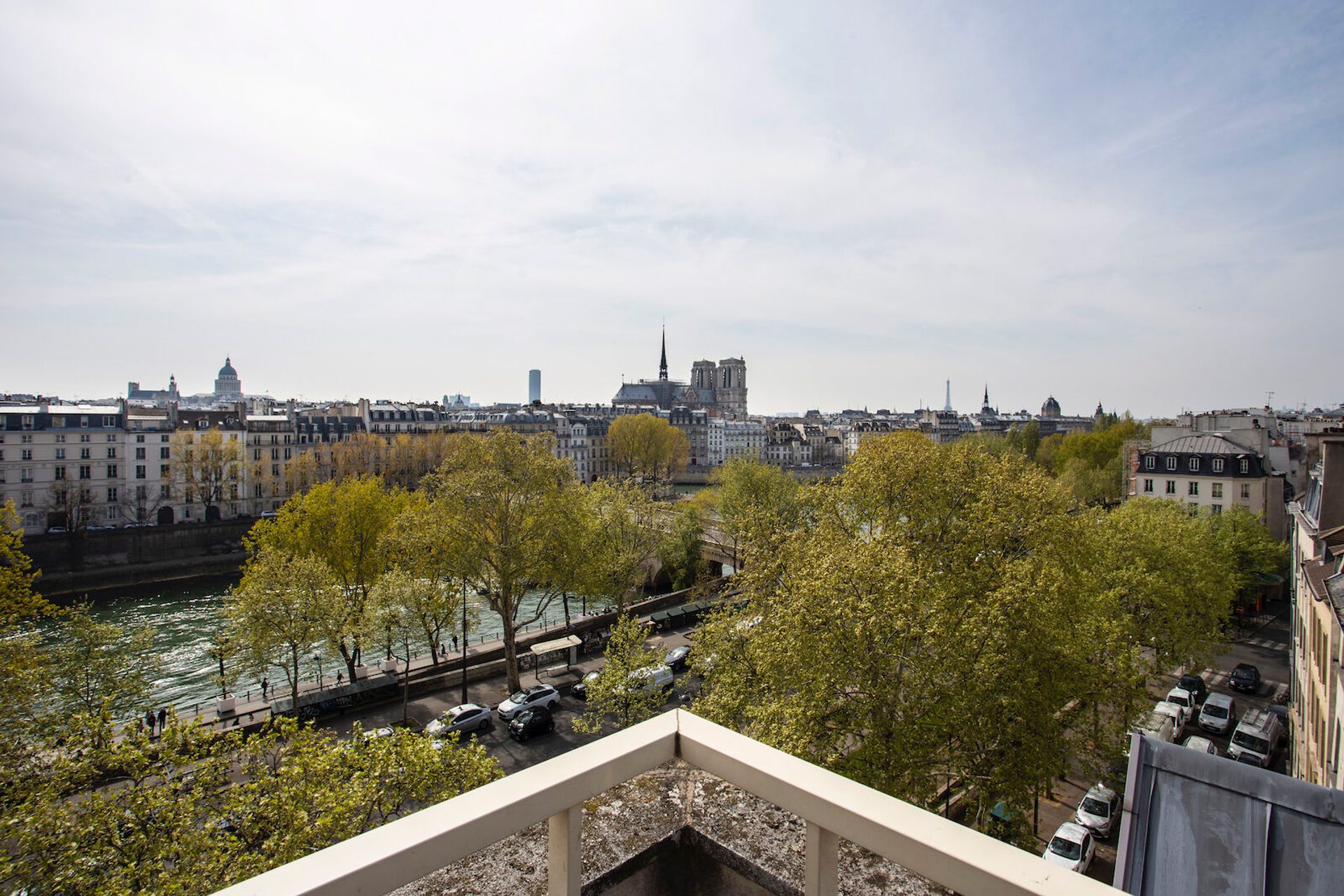
The other galang resident, Daniel Browning, we had about three weeks cross over time together. I'm a big fan of what Daniel does and so to have the time there, being in that experience with him and learning about his research, was so rewarding – just bouncing my ideas off another Aboriginal person in that setting.
AA What did you enjoy most about the creative process?
JC The other galang resident, Daniel Browning, we had about three weeks cross over time together. I really, really appreciated and enjoyed the time that I spent talking with him. Not only about his work, but also my work. I'm a big fan of what Daniel does and so to have the time there, being in that experience with him and learning about his research, was so rewarding. And then, you know, just bouncing my ideas off another Aboriginal person in that setting. And getting his critique and feedback about my thinking and my approaches was really valuable and I really, really appreciated that.
AA That sounds like a really important connection that you made through the residency. Were there any other important connections like that that you made during your time?
JC The French culture is very much built on connections and the Cité [internationale des arts] has a lot of wonderful connections. I had a chief editor from a decolonist magazine pop into the city to meet me because the Cité had told him of the work I was doing and interested in.
And so I found that people over there, they make the time for people, and they have a genuine interest just in connecting, just to see where people line up.
I met an artist from Germany that does a lot of feminist artwork and she does that with her daughter. And so the Cité had an understanding that back home, my mum and I do a lot of weaving together, and so they made sure that we connected while I was there because they knew that intergenerational value in our practice that we both aligned on that level.
You might see yourself one way, but then when the people who staffed the Cité meet you it's always interesting to see what they've taken away from their understanding of you and then how they would line you up with other people that they know. When I'm here, we weave with mum – I wouldn't think anything of it. But yet for them looking at me, that's something that they value. And then they look for other people who value that.
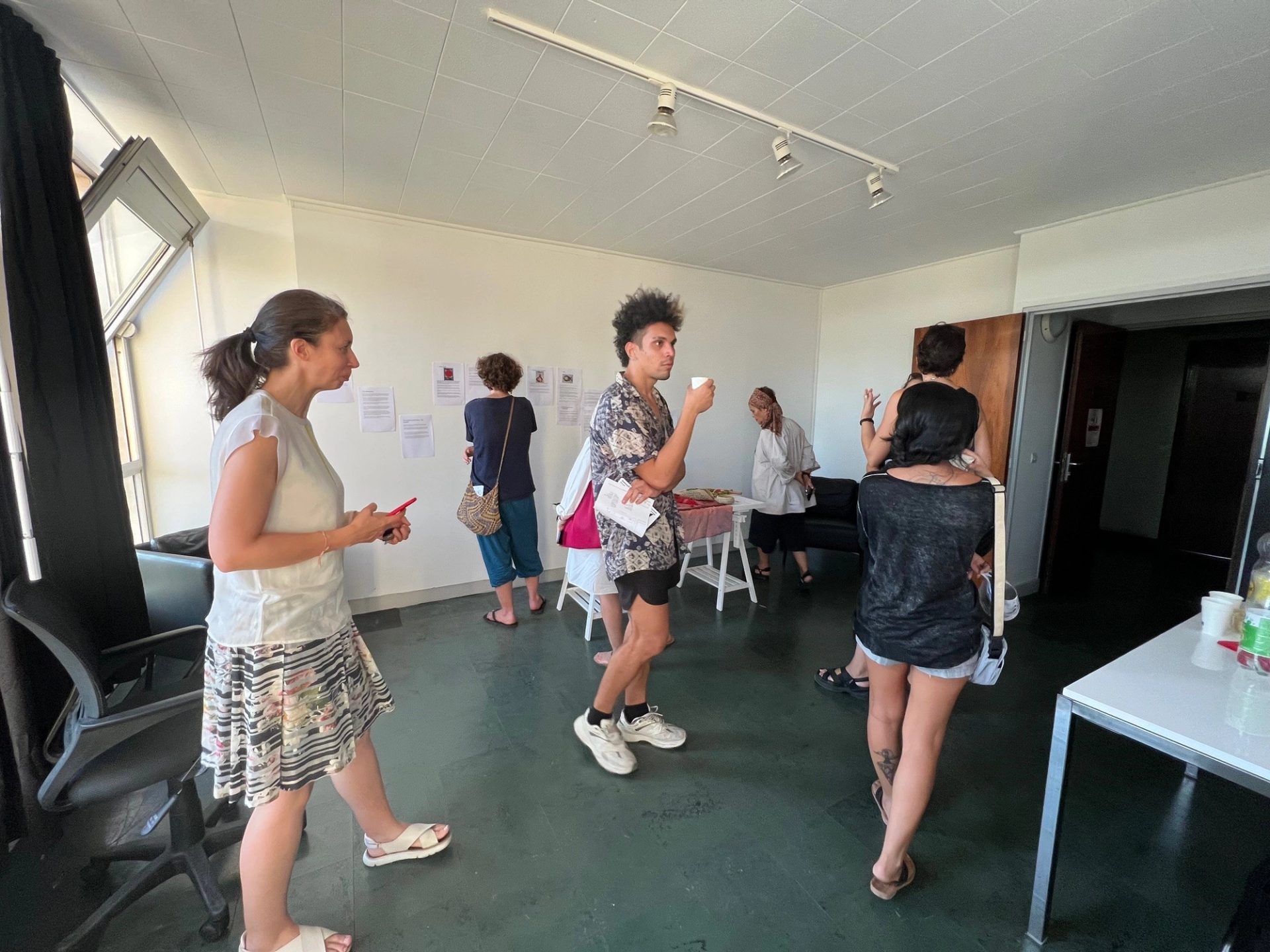
AA And that's helpful. What did you enjoy most about Paris – the people, the city, the food, the culture?
JC I enjoyed catching up with a lot of blackfellas while I was there in Paris, because I think I caught up with about nine blackfellas – it was a blackout. I caught up with blackfellas that I didn't even know, but, you know, my cousin knew was going to be there. So it was quite amazing for me to kind of feel so at home in a foreign place – we were all passing through for one reason or another, there's some people that live there. So it was really lovely to still feel part of the community even when I was there.
But in terms of Paris itself there's just a lot of awe and wonder. And I did explain it to some people over there. Like I said, when I go into the churches or the museums, just the scale of everything, it can really take your breath away. But in Australia when I'm out on Country, in those natural surrounds, that's where I would feel a sense of awe and wonder. There was a lot of grandiose and magnificence that you could really appreciate because we don't have that here, but that feeling of just being in awe – Well, we do have that here – but it's not because of the buildings. It's because of Country.
AA How does it feel to have participated in the residency?
JC It all went so smoothly. There's so many things about life that I think a lot of people have shared understandings that today is all you have control over. The cookie will crumble the way it crumbles. For me, residency life was really living that and really just being open to each day and seeing where it takes you. And I really value that because it's so easy to live in autopilot or to be serving someone else's agenda.
But to be able to just open up time, just to serve a greater purpose of storytelling and be open to however that comes to you is. Such a special experience to have and to know that's what you've been part of.
AA If a friend or a peer considered applying for the residency, what advice would you give them?
JC Don't doubt yourself. I think what is good about the residency is that it can be whatever you can make of it. And it's open to people, whether you see yourself as an artist or a cultural practitioner – however you put yourself together, it's open to you.
I would encourage people not to be limited in thinking. When I first saw it, I thought, ‘Oh, it looks like a good thing’, but I didn't think it would apply to me. But then when I looked at it, I thought, ‘Oh, actually, there's no reason why it wouldn't’. And so just be really open minded about what you could do with the experience and what you could bring to it. And don't get too caught up on the labels.
About
Jayne Christian is a Baramadagal woman of the Reid/Goldspink family belonging to the Dharug Nation. Jayne chairs the Parramatta City Council First Nations Advisory Group and is an Ambassador for the Treaty Council. Jayne has practiced as a social justice lawyer for ten years, with a focus on working with Aboriginal Communities across NSW. Jayne belongs to the weaving communities in Wagga Wagga and Western Sydney, is a member of Parramatta Weaving Garden Collective and practices traditional and contemporary styles of weaving and dyeing.
Ayeesha Ash is a proud Māori Grenadian artist and a content creator at Powerhouse.
More
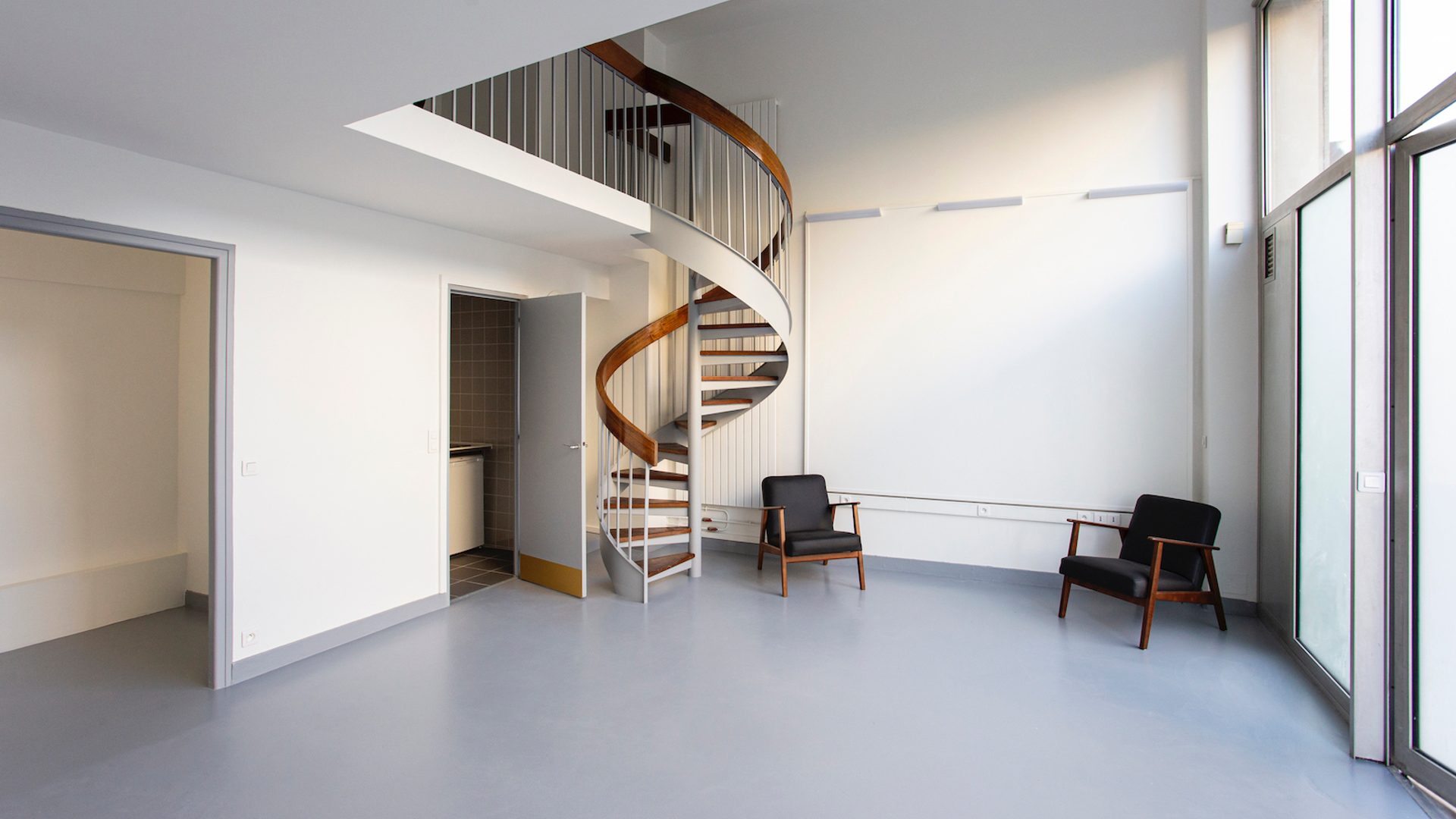
galang Residency
The galang residency program is a unique platform for First Nations artists based in Australia to create a fruitful dialogue with creators from the French and international artistic and professional scenes — and to open their references and practices to other horizons and new audiences.
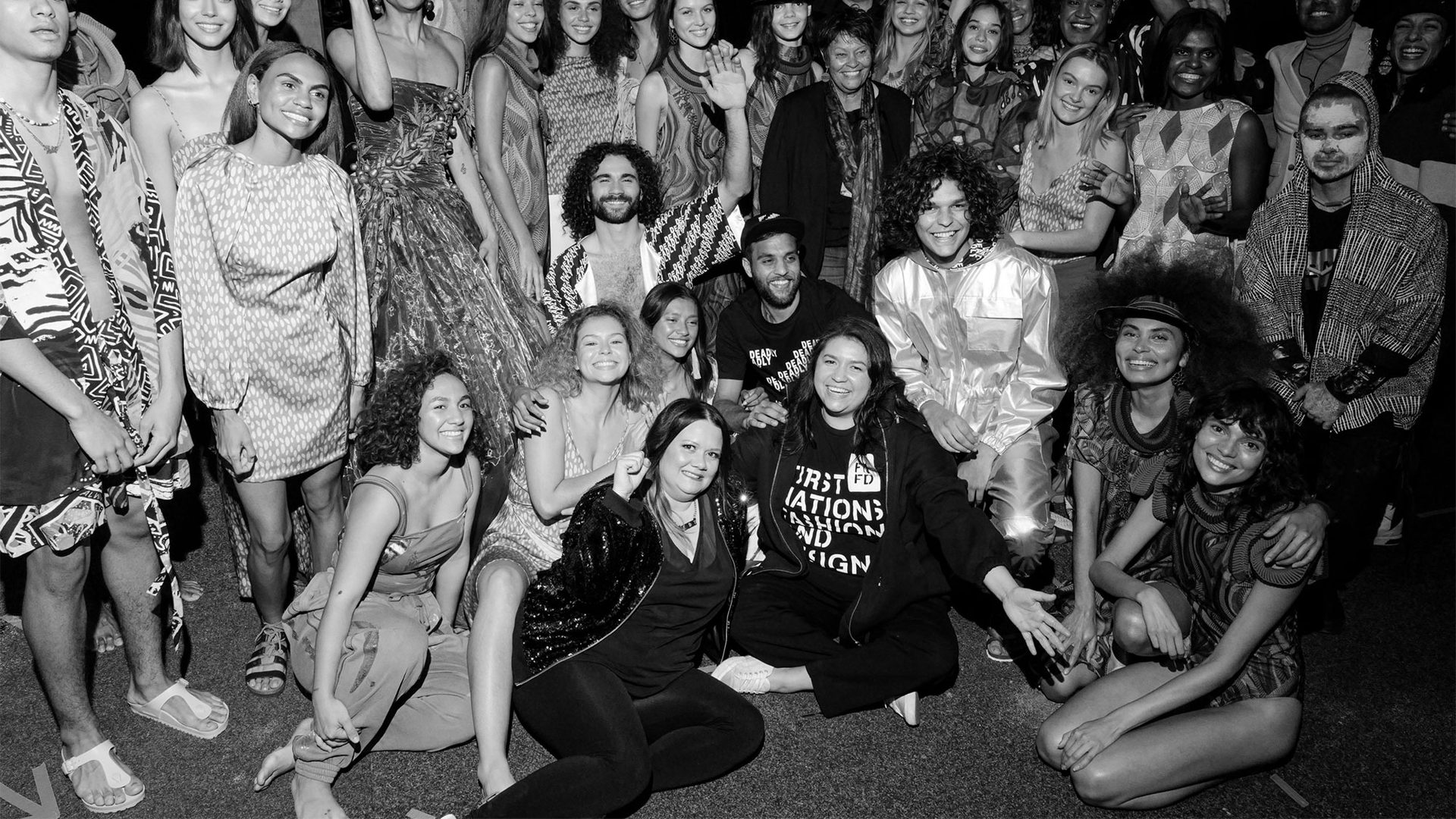
Initiatives
We support and invest in a range of initiatives that sustain industry development and individual creative practice across the applied arts and sciences and creative industries.











